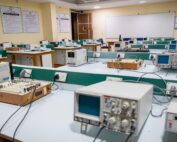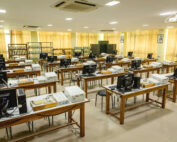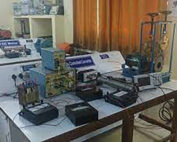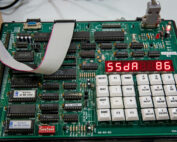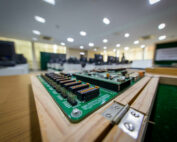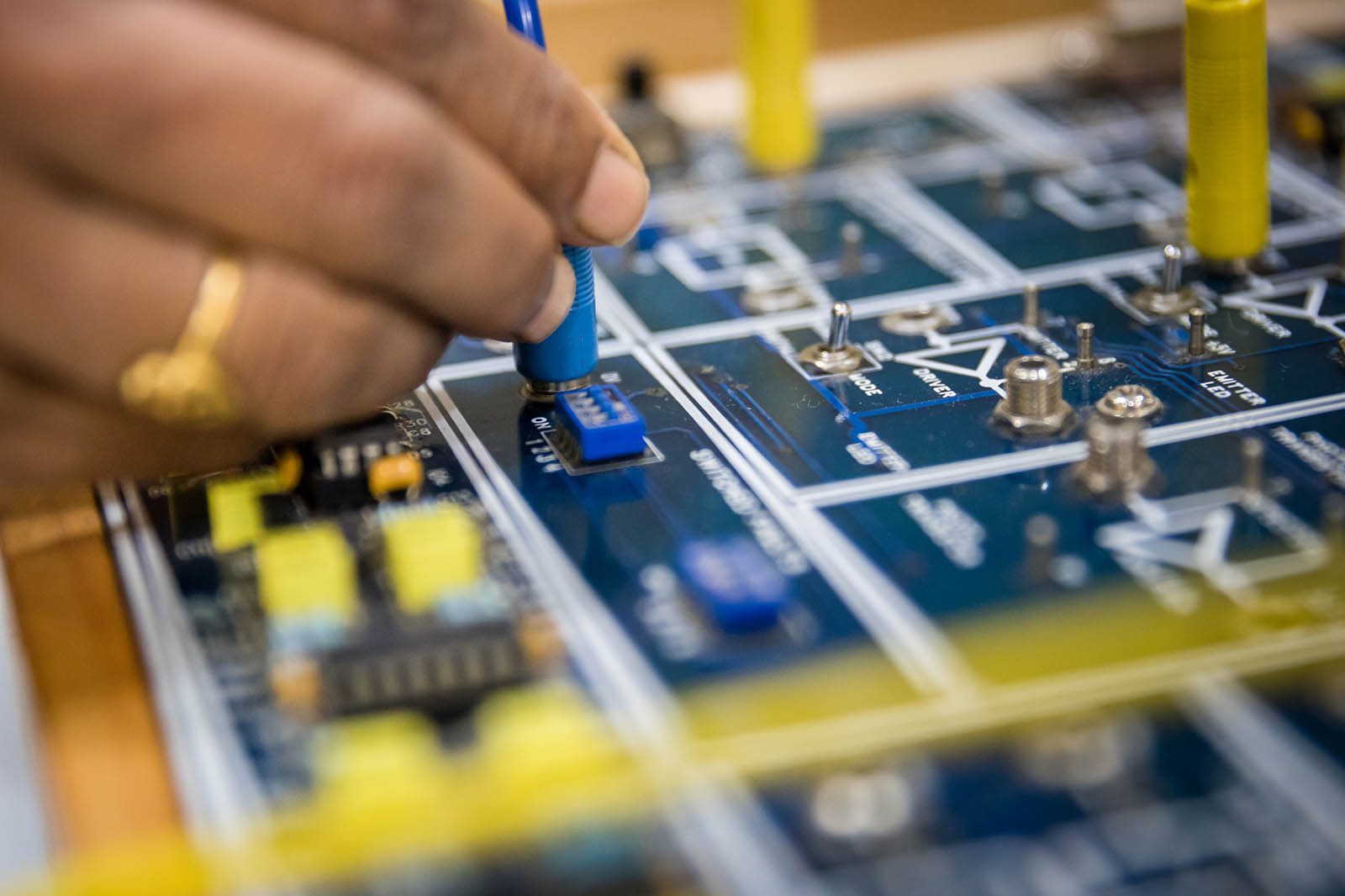B. Tech in VLSI Design and Technology
The scope and features of Electronics Engineering in VLSI (Very-Large-Scale Integration) Design and Technology are vast, as this field lies at the heart of modern electronics and plays a critical role in the development of integrated circuits (ICs) used in nearly every electronic device. VLSI design involves creating complex microchips by integrating thousands to billions of transistors onto a single chip, which are essential for applications in computers, telecommunications, consumer electronics, automotive systems, healthcare, and more. With the rapid miniaturization of electronic devices, the demand for high-performance, power-efficient, and cost- effective VLSI chips is growing exponentially. Engineers in this field work on both the design and fabrication of ICs, which involves creating circuit layouts, optimizing transistor configurations, and testing the functionality of chips. This technology is critical for advancements in areas such as processors, memory chips, and sensors, enabling the development of smaller, faster, and more efficient electronic products. VLSI design also forms the backbone of mobile devices, 5G communication systems, AI hardware, and Internet of Things (IoT) devices, making it a cornerstone for the future of electronics. The scope of VLSI design extends into cutting-edge research areas like quantum computing and 3D ICs. Features of this field include the need for proficiency in design tools such as CAD (Computer-Aided Design) software for layout design and simulation tools for verifying chip functionality. Expertise in hardware description languages like VHDL and Verilog is essential, as well as knowledge of semiconductor physics, logic design, and digital signal processing. VLSI engineers are also increasingly focusing on low-power design techniques to address the growing need for energy-efficient devices, especially in mobile and wearable technology. The ongoing advancements in fabrication technologies, like FinFET and nanometer-scale processing, continue to push the boundaries of VLSI design, enabling faster, more efficient chips. As electronics continue to permeate every aspect of modern life, VLSI Design and Technology will remain a critical field with abundant opportunities for engineers to innovate and lead in the creation of next-generation electronic devices.
- Candidates completed or appearing 10+2 examination or equivalent are only eligible to apply for B.Tech(4 Years) course of the University.
- They should have studied in regular full-time formal education during their schooling/college.
- Pass in 10 +2 or its equivalent with at least 60% marks in Physics, Chemistry, and Mathematics taken together.
Program Educational Objectives (PEO)
The B. Tech program in Electronics and Telecommunication Engineering aims to prepare the graduates with the following objectives:
- Graduates shall be able to lead a successful career in industries or undertake entrepreneurial endeavors and provide solutions in the areas of electronic system design, communication network operation and management issues, and allied areas of Electronics and Telecommunication engineering.
- Graduates shall be able to perceive the limitation and impact of engineering solutions in social, legal, environmental, economical and multidisciplinary contexts.
- Graduates shall demonstrate professional and ethical responsibilities and thrive to reinforce their knowledge being a part of higher educational programs.
Program Outcomes :
- a) Engineering knowledge: Ability to apply the knowledge of mathematics, science, engineering fundamentals, and an engineering specialization to the solution of complex engineering problems.
- b) Problem analysis: Ability to identify, formulate, review research literature, and analyze complex engineering problems reaching substantiated conclusions using first principles of mathematics, natural sciences, and engineering sciences.
- c) Design/Development of solutions: Ability to design solutions for complex engineering problems and design system components or processes that meet the specified needs with appropriate consideration for the public health and safety, and the cultural, societal, and environmental considerations.
- d) Conduct investigations on complex problems: Ability to use research-based knowledge and research methods including design of experiments, analysis and interpretation of data, and synthesis of the information to provide valid conclusions.
- e) Modern tool usage: Ability to create, select, and apply appropriate techniques, resources, and modern engineering and IT tools including prediction and modeling to complex engineering activities with an understanding of the limitations.
- f) The engineer and society: Ability to apply reasoning informed by the contextual knowledge to assess societal, health, safety, legal and cultural issues and the consequent responsibilities relevant to the professional engineering practice.
- g) Environment and sustainability: Ability to understand the impact of the professional engineering solutions in societal and environmental contexts, and demonstrate the knowledge of, and need for sustainable development.
- h) Ethics: Ability to apply ethical principles and commit to professional ethics and responsibilities and norms of the engineering practice.
- i) Individual and team: Ability to function effectively as an individual, and as a member or leader in diverse teams, and in multidisciplinary settings.
- j) Communication: Ability to communicate effectively on complex engineering activities with the engineering community and with society at large, such as, being able to comprehend and write effective reports and design documentation, make effective presentations, and give and receive clear instructions.
- k) Project management and finance: Ability to demonstrate knowledge and understanding of the engineering and management principles and apply these to one’s own work, as a member and leader in a team, to manage projects and in multidisciplinary environments.
- l) Life-long learning: Ability to recognize the need for, and have the preparation and ability to engage in independent and life-long learning in the broadest context of technological change.
Programme Specific Outcomes (PSO) :
The program specific outcomes are:
- Ability to design and implement electronic circuits, signal processing and communication systems in industry.
- Ability to carry out research in fields of embedded systems, wireless and high speed communication, and advanced signal processing.
- Ability to utilize the knowledge in solving practical problems in real life.


